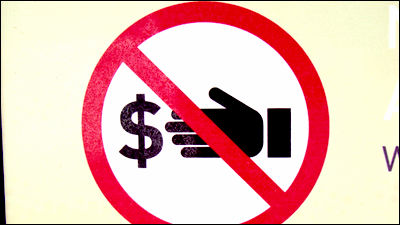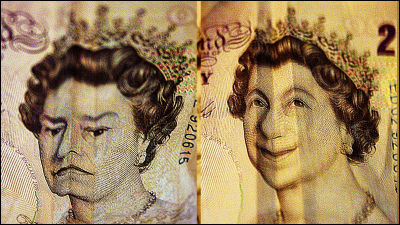Former used car dealer explains rip-off price negotiation tactics used by car dealers

Alan Stone, a former used car salesman, explains the ``rip-off price negotiation technique'' that dealers use to extract as much money as possible from customers when purchasing a car.
Dealerships Rip You Off With The “Four-Square,” Here's How To Beat It

In the United States, when car dealers conduct business negotiations with customers, they use a sheet of paper called a 'worksheet' or 'foursquare,' which is divided into four boxes. This is a piece of paper that dealers use when negotiating prices with customers for both used and new cars.
In the worksheet, the trade-in price is written in the top left of the four boxes, the purchase price in the top right, the down payment in the bottom left, and the monthly payment amount in the bottom right.
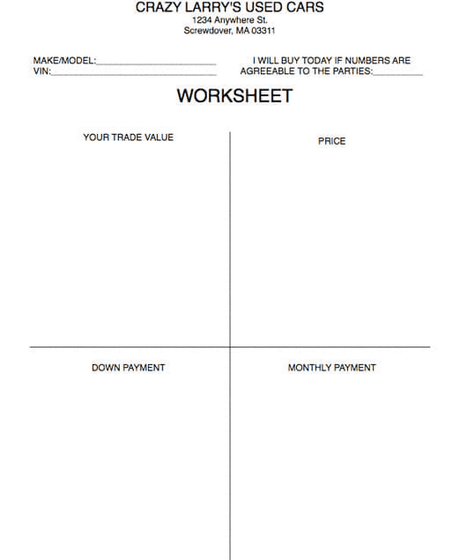
The salesman writes down the car's make, model, vehicle identification number, and customer information, and explains to the customer, ``If the numbers are mutually agreeable, you can buy it today.'' This seems to be a line to confirm whether the customer is really ready to buy a car. At this time, those who actually intend to purchase the car seem to sign the worksheet without any problem.
Salesmen communicate directly with customers, but sales managers negotiate the price of cars, and it seems that customers do not negotiate prices face-to-face. The salesman looks up the price of the car the customer is considering purchasing and fills in the blanks on the worksheet as shown below.
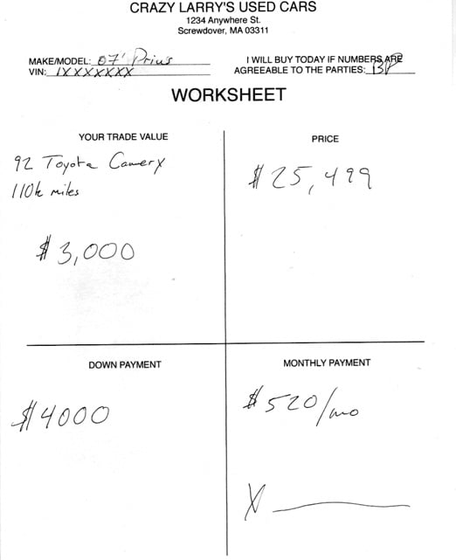
In the above case, the trade-in price is ``3000 dollars'', and the manufacturer name, model name, and mileage of the traded car are also listed roughly. If the customer is expecting a higher trade-in value, the salesperson will explain the worksheet's contents as quickly as possible and quickly move on to explain the next item.
Next, I will explain about the down payment. The down payment column describes the amount the customer will pay on the day of purchase, and the last column explains the monthly payment amount.
The numbers initially presented on the worksheet are intended to draw the customer's attention to the ``monthly payment amount'' and ``down payment,'' and are set higher than the amount originally requested by the dealer. Mr. Stone said, ``Unless you are a very careful person, you don't really care about the selling price of a car.The dealer's intention is to lead the customer to payment before he or she notices the selling price.''
When a customer is frustrated by unreasonably high monthly payments and down payments, the salesperson acts as if nothing is wrong and asks the customer to sign to complete the transaction. There are two reasons for this: ``The customer might be the dumbest sucker the dealer has ever met,'' and ``saying not to sign makes the customer look like an attacker.'' There is, Stone explained.
If the customer decides not to buy the car at this price because the numbers are dissatisfied, the salesman asks the customer which numbers he has a problem with. At this time, most customers seem to point out that the problem is the unreasonably high down payment. In that case, the salesman would fold the worksheet in half so that only the down payment and monthly payments were visible and rewrite the down payment as the amount requested by the customer. He then says, ``The smaller the down payment, the higher the monthly payment amount,'' and hopes that the customer will either accept the new offer or offer a higher down payment.
If a customer says, ``The monthly payment is too high,'' the salesman will say, ``My manager is crazy today and we haven't been able to sell that many cars. 'If you can get a car for this amount, would you buy it now?' and then offer a new monthly payment amount.
At this point, most customers are satisfied with the amount offered by the dealer and complete the transaction. Stone said that in most cases, the customer thinks they got a good deal and imagines how the salesman would start a conversation to persuade his boss's manager. The worksheet that is completed in this way is shown below, and the customer's total payment amount has not changed at all, only the down payment and monthly payment amount (and payment period) have changed.
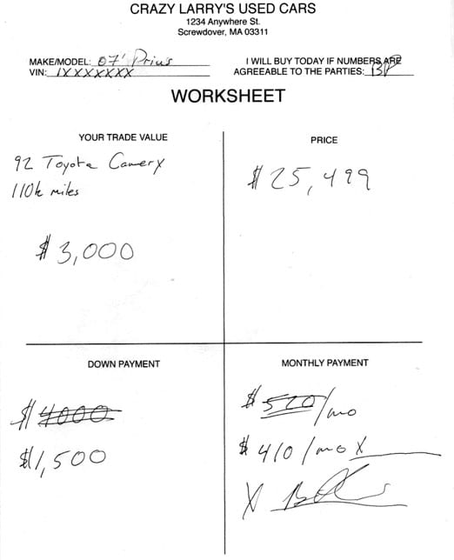
It seems that in most cases, it is not a problem for customers to request a higher trade-in value, as the selling price of the car only needs to be increased by the amount that the trade-in value is increased. Usually, customers do not seem to notice this price manipulation process. This sales method is called 'push-pull-or-drag.'
Stone describes these price-haggling tactics by dealers as, ``They seem pretty basic on the surface, but they're cleverly designed to make you pay more and keep you from realizing what's going on.'' When negotiating prices, managers write numbers in unnecessarily large letters and then scribble the numbers on the back of the worksheet because they need space, making customers tired and difficult to understand what's going on. ” he said.
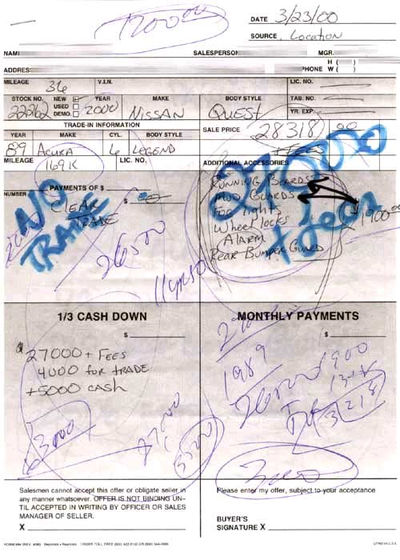
◆Forum now open
A forum related to this article has been set up on the GIGAZINE official Discord server . Anyone can write freely, so please feel free to comment! If you do not have a Discord account, please create one by referring to the article explaining how to create an account !
• Discord | 'Have you ever gotten a cheaper price through negotiation when buying a car? Tell me some tips on negotiation!' | GIGAZINE
https://discord.com/channels/1037961069903216680/1223195630420099083
Related Posts:
in Note, Posted by logu_ii
